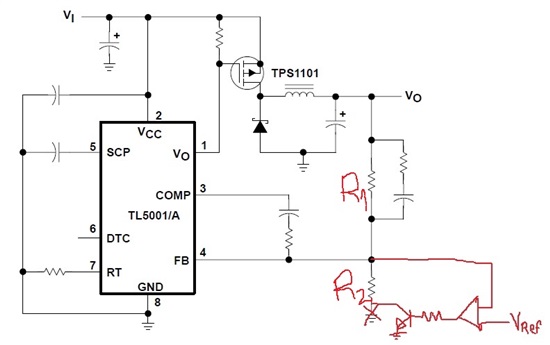I have a TL5001 which i would like to use as a variable output regulator (this is a "tracking pre-regulator" for a linear PSU. I want the output to be just a few volts above the final Vout to minimize dissipation in the linear stage).
Reading the datasheet for TL5001 I found it's set by two resistors, and Vout is 1+R1/R2. How can I use a fixed external reference instead?


